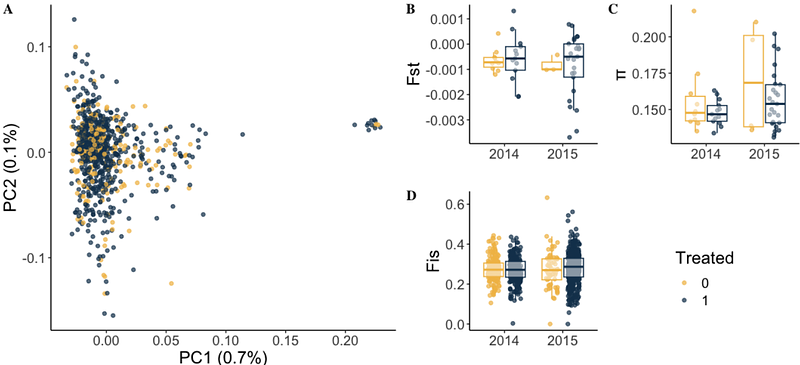Do epidemiologically impactful vector control interventions disrupt mosquito population structure?

Do epidemiologically impactful vector control interventions disrupt mosquito population structure?
Dennis, T. P. W.; Guelbeogo, W. M.; Ferguson, H. M.; Lindsay, S.; N'Fale, S.; Pignatell, P.; Ranson, H.; Sanou, A.; Tiono, A.; Weetman, D.; Viana, M.
AbstractLarge epidemiological impacts resulting from vector control interventions are typically associated with significant perturbation of vector populations. While vector density is a frequently measured response, impacts on population demography and connectivity are suspected but rarely quantified. As population fragmentation can compromise metapopulation viability, the type of intervention and effort required to control or eliminate vector populations will fundamentally change. We analysed whole-genome sequences of 893 malaria Anopheles gambiae mosquitoes collected at 7 time points between 2024-2015 during a clustered randomized control trial (cRCT) in Burkina Faso. This cRCT compared a pyrethroid-only net (ITN) with a pyrethroid-pyriproxyfen (ITN-PPF) net. Although the ITN-PPF reduced clinical malaria by 12% and vector density by 22% compared to ITN, our results revealed no significant changes in An. gambiae population genetic structure or diversity. Analysis showed remarkably low population differentiation (mean Fst: -0.00073, 95% CI: -0.00109, 0.00013) and no discernible clustering by treatment, time, or space. Metrics of population diversity (nucleotide diversity and inbreeding coefficient) remained stable between treatments, and genome-wide scans showed no putative signatures of selection between trial arms. Together, these results show that ITN-PPF did not alter An. gambiae genetic structure, possibly due to dispersal within this highly mobile vector species known to have large population sizes across West Africa. More widely, our findings provide the first evidence that reductions in vector density that are epidemiologically meaningful may not impact genetic diversity or connectivity and challenges what constitutes adequate vector control and the drivers of population heterogeneity in large populations.